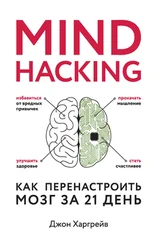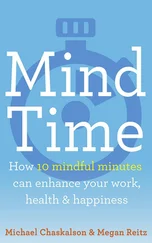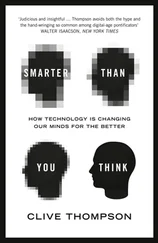The great irony of collaboration is that although geeks have created some of the most amazing global collaboration projects in history (Wikipedia, Linux, the Web), we are notoriously bad at collaborating in real life. Many of us are comfortable collaborating with strangers as long as they reside safely behind a screen, accessible only in text format. Some of us not even that!
A computer by itself is powerful, but connected to other computers it becomes far more powerful. The same is true of our minds: they become even more powerful when we connect with like minds. The technical term for this is network effect, where a technology becomes more useful as others adopt it. The classic example is the telephone: kind of useful if a few people own one, but incredibly useful if everyone owns one. In fact, with each successive person who buys a telephone, everyone’s telephone becomes more useful.
Wikipedia is a classic example of the network effect: the more people collaborate on articles, the more articles get created, and the more people are attracted to write even more articles. When we look at the incredible scale that websites and mobile apps are now able to achieve, and how rapidly they are able to do so, it is because of the network effects that come from millions of people using them. Success breeds success.
With mind hacking, the more we consciously connect our minds with the minds of others, the more we achieve these powerful network effects. We amplify the power of our own minds. I believe this explains why certain moments in history are marked by a clustering of unusually great minds (Socrates, Aristotle, and Plato in ancient Greece; Albert Einstein, Niels Bohr, and Werner Heisenberg in the 1920s and 1930s): the collective power of great minds can literally transform the world.
For the rest of us, it’s not just a “nice to have,” it is necessary to achieving our goals, to making our positive loops a reality. The good news is, the personal rewards that come from collaboration—from working with others, especially in person —are enormous. Since collaboration can feel so unnatural for geeks, this chapter focuses on specific things you can do to build collaboration into your life, turbocharging your mind hacking efforts by plugging into the cloud.
Alienus Non Diutius
Steve Jobs wanted Pixar to have one set of bathrooms.
Flush with cash from Pixar’s IPO in the late 1990s, Jobs set about designing a sprawling campus for his cutting-edge animation studio. He hired Bohlin Cywinski Jackson, the architectural firm that designed many of the flagship Apple stores, and personally oversaw many of the details, with his legendary flair for micromanagement. 4
The original design called for three buildings. The first building would contain the computer geeks, the second would contain the animators, and the third would contain everyone else: directors, editors, admin, and so forth. From his previous experience running Apple and NeXT, Jobs understood the value of collaboration. In order to make great movies, he needed the mixing of great minds. Separating teams by discipline was the wrong way to go; he wanted a building that had collaboration built in .
His idea was for all three buildings (geeks, arts, and admin) to be connected by an enormous central atrium. Then he looked for a way to force people to use it. First he moved all the mailboxes to the atrium, then the cafeteria and coffee bar. But that still wasn’t enough: he wanted Pixar to have just one set of bathrooms , located off the atrium.
The idea was to create more great ideas. Jobs believed the forced mingling of people from different disciplines was the way to raise everyone’s work to a higher level. Chief creative officer John Lasseter, one of the great creative and technical geniuses of our time, described it like this: “Technology inspires art, and art challenges the technology.” 5Making directors and developers share the same bathroom was a crazy way to force collaboration.
As it turns out, it was a little too crazy. Some people would have to walk fifteen minutes to use the toilet, which may have resulted in employees having to make emergency trips to the janitor’s sink. Personally, I don’t want any coworkers nearby: my perfect workplace bathroom would be in a private underground bunker several miles beneath the earth’s crust.
You can imagine Jobs ranting like a lunatic, screaming about his centralized bathrooms, while some poor architect tried to get him to compromise. Eventually Jobs got his atrium, but he did have to concede to a few additional bathrooms so those with weak bladders would not wet themselves at work.
The idea of a central collaborative space worked. In an industry where inconsistency is the norm—some movies are hits, some are flops, and most are somewhere in between—Pixar has churned out consistently excellent films, one after another, to the delight of moviegoers and critics alike. The average Rotten Tomatoes score for all movies is about 50 percent; the average score for Pixar movies is 88 percent (and that number goes up to 93 percent if you leave out Cars 2 ). 6
Many of us have to force ourselves to collaborate. While technology makes it easier than ever to isolate ourselves, becoming lost in our screens even when we’re sitting across the table from each other, technology also makes it easier than ever to connect. Joining discussion groups and online forums where we can collaborate with others who are trying to achieve the same goals is a good first step, but it’s even more powerful to do it in person. Here are a few easy ways to build collaboration into your life.
• Local meetups.There are other people near you, right now, trying to accomplish the same goals. Do a search for “entrepreneur networking” or “weight loss groups” or “local salmon farming classes,” and unless you are living on the International Space Station, you’ll find a group meeting near you. Be brave! Put it into your calendar and make the time to go. If I’m wrong and there is no group near you, start your own . The Web Innovators Group started as an informal gathering of a dozen people in 1995, and it is now one of the largest technology networking groups in Boston, drawing a thousand magnificent minds together in a huge, sweaty hotel ballroom.
• Shared workspaces.If you work from home or by yourself, consider using a coworking office instead, where you can bump into knowledge workers from other industries, giving you fresh perspectives and new ideas. Shared workspaces are cropping up in every major city: they’re comfortable, affordable, with unlimited coffee. I’m writing this from the Writers’ Loft, a shared space outside Boston started by my friend Heather Kelly. Writing around other writers means I get more quality writing accomplished here than anywhere else.
• Lunches.Make it a habit to invite potential collaborators to lunch. Mix it up: Ask different people with different backgrounds. I once worked with a group of IT admins who ate together at the same burrito place every day. They were like gang members, except their turf was Qdoba, with goatees instead of guns. They were also terrible IT admins; trying to get help with a support ticket was like trying to negotiate a Middle East peace accord. I often thought that if they had to eat lunch with people from other departments, they’d be better at their jobs. Meals let us connect with other minds in a pleasurable setting, because everyone loves to eat. Especially IT professionals.
We can’t expect collaboration to come to us. As with Pixar, we have to design our lives so that collaboration can naturally happen. The ideas above are just meant to get you started, but if you keep your eyes open, you’ll find other ways that collaborative opportunities will naturally present themselves. Take advantage of them .
Читать дальше
![Джон Харгрейв Mind Hacking [How to Change Your Mind for Good in 21 Days] обложка книги](/books/404192/dzhon-hargrejv-mind-hacking-how-to-change-your-min-cover.webp)











